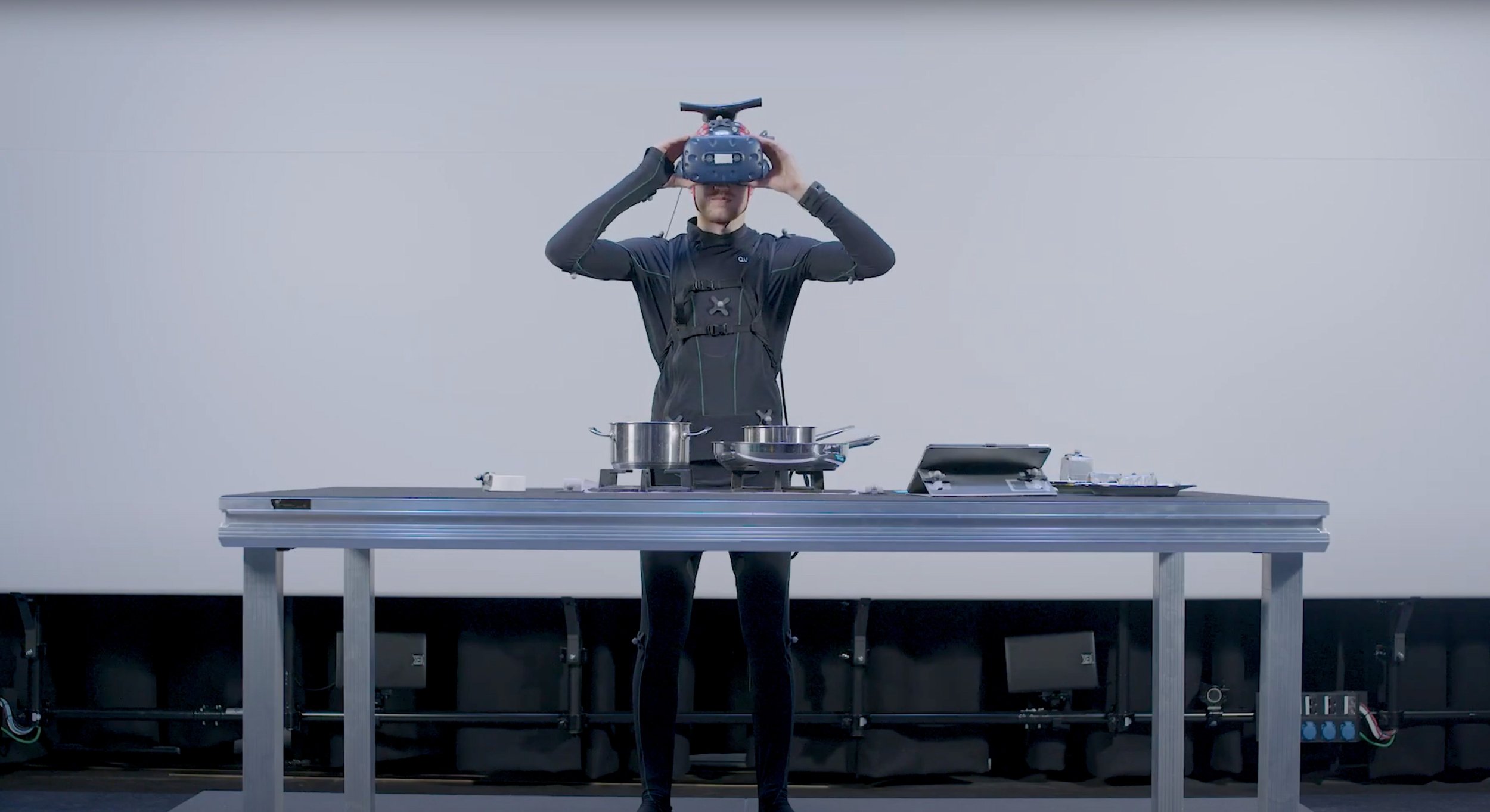
The ExperienceTwin
Tetra project
In recent years, we have researched and developed new methods, tools and software to validate as well as further automate testing and training in XR using new protocols. In this Tetra project we want to further explore how these user experiences can also be applied by companies in a low-threshold manner and with sufficient added value. More specifically, we look at what state-of-the-art tools are available to build interactive and digital experience twins from these processes, and how they can be integrated by companies into their existing workflows. Finally, we investigate how we can translate observed behaviour during these experiences (a.o. psycho-physiological data) into concrete ISO standards, and generate more comprehensive reports with insights into the user experience.
Within our target group, we distinguish between Integrators and Customers. The target group of Integrators consists of dozens of small and medium-sized Flemish companies with a tradition in simulation and ICT. The target group of Customers consists of an extensive group of companies from various sectors where these user-testing (user-centered) services offer added value.
ExperienceTwin will
enable them to deploy the right technology based on informed decisions,
allow them to get started themselves with available tools,
guide them in their demand articulation and
find and communicate with appropriate partners where necessary.
Concrete goals.
Technology Exploration: The intended goal of technology exploration is that the target group has actively experimented with (1) tools to set up immersive environments efficiently and inexpensively in which user testing can take place, (2) XR platforms that allow for the generation of a large number of objective metrics of user experience during virtual user testing, and (3) methods to translate objective user data into concrete industry-standard (ISO standards) reporting of user experience. These will be applied through at least 7 thematic workshops in consultation with the user group.
Technology Adaptation: The intended goal of technology adaptation is to walk through the explored XR technologies in a minimum of 3 integral design paths and additionally work out a minimum of 4 concrete demonstrators.
Networking: Connecting supply and demand side partners and broadening network through cross-fertilisation through the companion group meetings, seminars, demo’s, workshops and during sessions of Howest's XR academy, as well as at the marketplace and matchmaking session in the closing event.
Who participates?
imec-mict-UGent
HitLab - Howest
several partners from a broad range of sectors
Contact:
Address your email to Carl Balcaen via our contact page.
